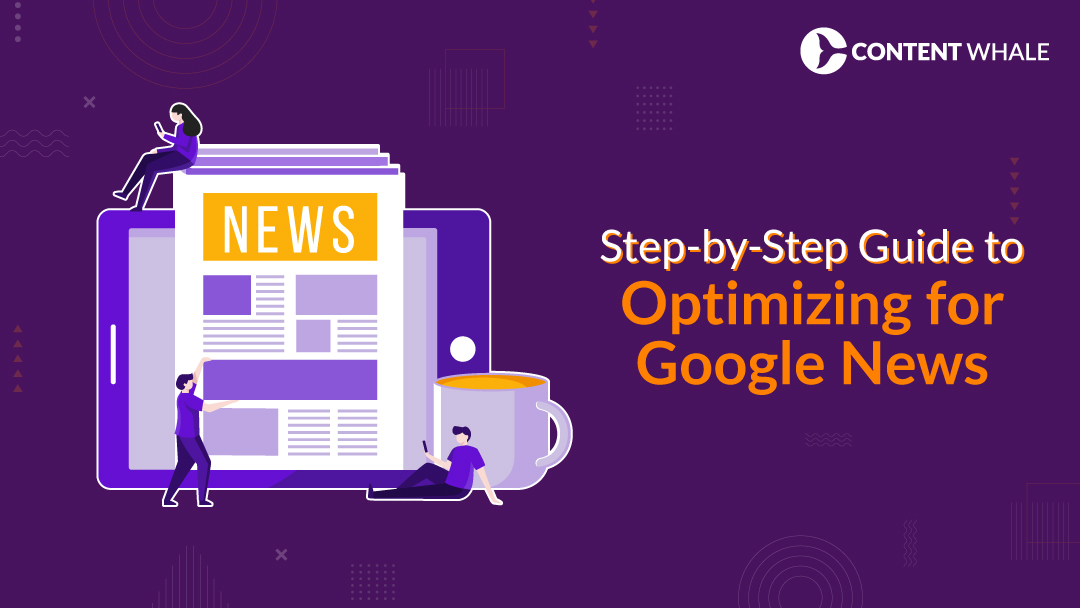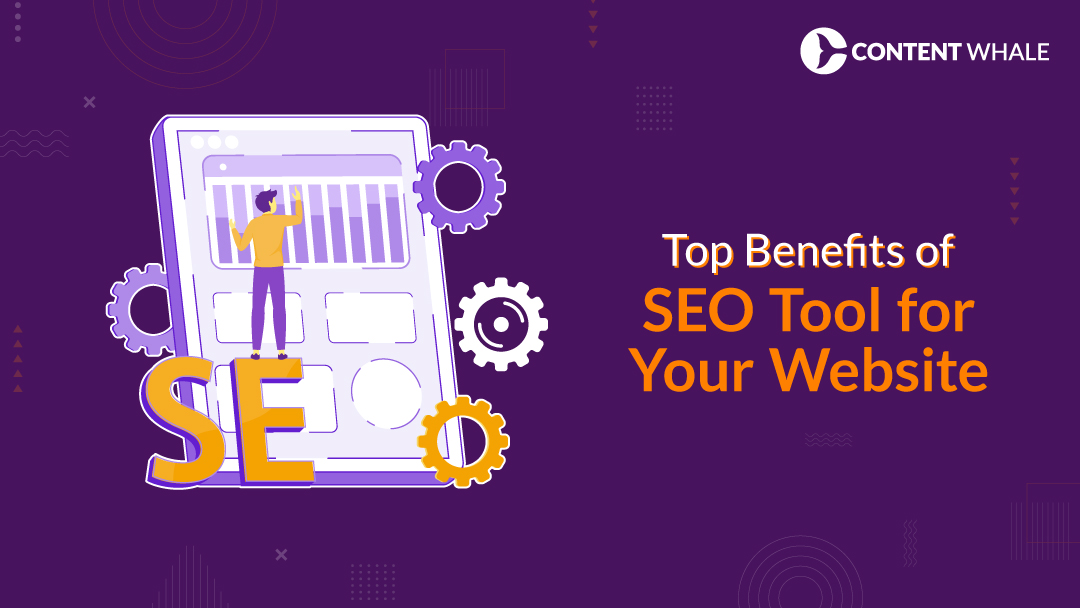Data-driven content marketing is an approach that uses data to inform every aspect of your content strategy, from planning and creation to distribution and measurement. By using data, you can ensure that your content is relevant, valuable, and impactful for your audience and your business.
In this blog post, you’ll learn what data-driven content marketing is, why it’s important in 2024’s digital marketing landscape, and how to implement it successfully. You’ll also discover the key components, tools, techniques, and metrics of data-driven content marketing, as well as the common challenges and solutions.
Let’s get started.
Introduction
Data is everywhere. Every time someone searches, clicks, shares, or comments on your content, they leave behind a trail of data that you can use to understand their behavior, preferences, and needs.
But data alone is not enough. You need to analyze, interpret, and apply it to your content marketing strategy to make data-driven decisions that improve your performance and ROI.
According to a report by Zipdo, 53% of organizations consider data-driven marketing an integral part of their marketing approach, and 54% use it to acquire new customers, showing its widespread application in various aspects of marketing.
But what exactly is data-driven content marketing, and how does it differ from traditional content marketing?
Understanding Data-Driven Content Marketing

Data-driven content marketing is a strategic approach to developing and executing content that relies heavily on insights from data. All content decisions are informed by data gathered through research and analytics rather than intuition or guesses.
The goal of data-driven content marketing is to enhance content performance and ensure favourable audience reception. To achieve this, you need to understand
- Your niche
- Your competition
- The channels you publish on
- Your audience
You also need to apply data at every step of the content journey: pre-production, production, and post-production. Data will help you create a well-thought-out content strategy, write optimized texts that appeal to your audience and improve them even more after publication.
Data-driven content marketing is not a new concept, but it has become more relevant and essential in 2024’s digital marketing landscape. Here’s why.
The Shift from Traditional to Data-Driven Strategies

Traditional content marketing is based on creating and distributing valuable, relevant, and consistent content to attract and retain a clearly defined audience and drive profitable customer action. It’s a proven and effective method, but it has some limitations and challenges.
It is really difficult to measure the impact of traditional content marketing on ROI, especially in terms of long-term goals and outcomes. This is because traditional content marketing often relies on assumptions and best practices rather than data and evidence.
Data-driven content marketing addresses these challenges by using data to guide and optimize every aspect of the content process. It helps you create content that is more relevant, personalized, and engaging for your audience, as well as more aligned with your business goals and KPIs.
Data-driven content marketing also helps you gain a competitive edge in the crowded and noisy online space, where attention spans are short and content is abundant. By using ‘right’ data, you can identify and capitalize on the gaps and opportunities in your niche, as well as the strengths and weaknesses of your competitors.
To illustrate the difference between traditional and data-driven content marketing, let’s look at some real-world examples.
Example 1: HubSpot
HubSpot is a leading provider of inbound marketing, sales, and customer service software. They are also known for their extensive and high-quality content marketing efforts, which include blogs, ebooks, webinars, podcasts, videos, and more.
HubSpot may be using data-driven content marketing to create and optimize their content for their audience and their business. They may be using various tools and techniques to gather and analyze data, such as:
- Keyword research
- Content analysis
- Content optimization
- Content distribution
- Content measurement
By using data-driven content marketing, HubSpot would’ve achieved impressive results, such as:
- Generating incremental monthly visitors to their blog
- Growing their email list year-over-year
- Increasing their organic traffic year-over-year
- Driving a significant number of leads per month
Example 2: Netflix
Netflix is a global streaming service that offers a wide range of TV shows, movies, documentaries, and original content. They are also known for their innovative and data-driven content marketing strategies, which include creating and distributing personalized and engaging content for their audience in different regions.
Netflix could use data-driven content marketing to create and optimize their content for their audience and their business. They will be using various tools and techniques to gather and analyze data, such as:
- Audience analysis
- Content creation
- Content personalization
- Content measurement
By using data-driven content marketing, Netflix will have achieved remarkable results, such as:
- Gaining millions of subscribers worldwide
- Generating incremental watch time per week
- Earning awards and recognition in the market
- Increasing their revenue year-over-year
This is how most mega-giants use data-driven content marketing. Data-driven content marketing, most probably, is also a part of those startups which got ‘too-big too-fast’, example being Zomato, Rapido, Byjus, etc.
Key Components of Data-Driven Content Marketing

As you can see from the examples above, data-driven content marketing involves several components that work together to create and optimize content for your audience and your business. Here are some of the key components of data-driven content marketing:
- Audience analysis: Process of collecting and analyzing data about your target audience. Audience analysis helps you understand who your audience is, what they want, and how they consume content. It greatly helps you segment your audience.
- Competitor analysis: Process of collecting and analyzing data about your competitors. It helps identify and capitalize on the gaps and opportunities in your niche, as well as the strengths and weaknesses of your competitors.
- Content analysis: This is the process of collecting and analyzing data about your existing and potential content, such as their relevance, value, and impact. Content analysis helps you evaluate and improve your content performance across platforms and channels, such as social media, email, and web.
- Content optimization: Process of enhancing and refining your content for maximum SEO and user experience (UX). For UX, you can improve your content’s readability, clarity, structure, format, style, tone, and voice. For SEO, improve your keywords, headings, subheadings, images, links, etc.
- Content distribution: Done right, it can help you reach and engage your target audience, as well as expand your reach and exposure to new and potential audiences.
- Content measurement: Process of tracking and reporting on the performance and impact of your content. Basically, it evaluates your content’s effectiveness against ROI. It helps identify and optimize the key drivers and factors of your content success.
These are some of the key components of data-driven content marketing, but they are not the only ones. Depending on your goals and needs, you may also need to consider other aspects, such as content ideation, content planning, content management, content testing, content auditing, and more.
Leveraging Data for Enhanced Audience Targeting

One of the main benefits of data-driven content marketing is that it helps you target your audience more effectively and efficiently. By using data, you can create content that is more relevant, personalized, and engaging for your audience, as well as more aligned with their intent and stage in the buyer’s journey.
To leverage data for enhanced audience targeting, you need to follow these steps:
- Collect data: Through surveys, interviews, feedback forms, analytics tools, social media platforms, and more.
- Analyze data: You need to analyze the data you collected and extract meaningful insights and patterns. This can be done through data visualization, segmentation, clustering, correlation, regression, and more.
- Apply data: Use various tools and techniques, such as persona development, buyer journey mapping, content mapping, keyword research, etc. to create content that matches your audience’s profile, and intent, as well as their style, and tone preferences.
By leveraging data for enhanced audience targeting, you can create content that resonates with your audience and drives them to take action. You can also improve your content’s performance and ROI, as well as your audience’s satisfaction and loyalty.
Tools and Techniques for Gathering Data-Driven Insights

To implement data-driven content marketing successfully, you need to use various tools and techniques to gather and analyze data. There are many tools and techniques available in the market, but here are some of the most popular and effective ones:
- Google Analytics (GA-4): One of the most widely used and powerful tools for web analytics. It helps you measure and report on the performance and impact of your website and content, such as traffic, bounce rate, conversions, revenue, and more. It also helps you understand and segment your audience, as well as their behavior, preferences, and needs.
- SEMRush: This is one of the most comprehensive and versatile tools for SEO and content marketing. It helps you conduct keyword research, competitor analysis, content analysis, content optimization, content distribution, and content measurement. It also helps you identify and capitalize on the gaps and opportunities in your niche, as well as the strengths and weaknesses of your competitors.
- BuzzSumo: This is one of the most popular and useful tools for content analysis and research. It helps you discover and analyze the most shared and engaging content across platforms and channels, such as social media, web, and email. It also helps you generate and validate new content ideas, as well as monitor and benchmark your content against your competitors and industry standards.
- Ahrefs: This is one of the most advanced and reliable tools for SEO and content marketing. It helps you conduct keyword research, competitor analysis, content analysis, content optimization, content distribution, and content measurement. It also helps you monitor and improve your backlink profile, as well as your domain authority and ranking.
- CoSchedule: This is one of the most user-friendly and efficient tools for content planning and management. It helps you create and manage your content calendar and workflow, as well as collaborate with your team and stakeholders. It also helps you optimize your content for SEO and user experience, as well as distribute and promote your content across platforms and channels.
These are some of the tools and techniques for gathering data-driven insights, but they are not the only ones. Depending on your goals and needs, you may also need to use other tools and techniques, such as surveys, interviews, feedback forms, social media platforms, and more.
Implementing Data-Driven Insights in Content Creation

Gathering data-driven insights is not enough. You need to implement them in your content creation to create impactful and effective content for your audience and your business. Here are some tips and best practices for implementing data-driven insights in content creation:
- Define your goals and KPIs: Before you start creating content, you need to define your goals and KPIs. You need to know what you want to achieve with your content, and how you will measure and evaluate your success. Your goals and KPIs should be SMART: Specific, Measurable, Achievable, Relevant, and Time-bound.
- Know your audience: You need to know who your audience is, what they want, and how they consume content. You need to use data and insights to create and update your buyer personas and buyer journey maps. You need to create content that matches your audience’s profile, intent, and stage, as well as their content format, style, and tone preferences.
- Research your topic: You need to research your topic thoroughly and find relevant and reliable sources and information. You need to use data and insights to generate and validate your content ideas, as well as identify and fill the gaps and opportunities in your niche. You need to create content that is original, valuable, and informative for your audience and your business.
- Write your content: You need to write your content clearly, concisely, and compellingly. You need to use data and insights to optimize your content for SEO and user experience, such as using keywords, headings, subheadings, images, links, and other elements. You need to create content that is engaging, persuasive, and actionable for your audience and your business.
- Edit and proofread your content: You need to edit and proofread your content carefully and thoroughly. You need to use data and insights to improve your content’s readability, clarity, structure, format, style, tone, and voice. You need to create content that is error-free, consistent, and professional for your audience and your business.
By implementing data-driven insights in content creation, you can create content that is more relevant, personalized, and engaging for your audience, as well as more aligned with your goals and KPIs.
Measuring Success: KPIs and Metrics in Data-Driven Content Marketing

Creating data-driven content is not enough. You need to measure and evaluate the performance and impact of your content. You need to use data and insights to track and report on your content’s effectiveness and ROI, as well as identify and optimize the key drivers and factors of your content success.
To measure success, you need to use various KPIs and metrics, such as:
- Traffic: This is the number of visitors that come to your website or content. Traffic helps you measure the reach and exposure of your content, as well as the quality and relevance of your content for your audience. You can use tools like Google Analytics and SEMRush to measure and analyze your traffic, such as sources, channels, devices, locations, and more.
- Engagement: This is the number and type of interactions that your audience has with your content, such as likes, shares, comments, views, clicks, and more. Engagement helps you measure the interest and satisfaction of your audience, as well as the value and impact of your content for your audience. You can use tools like BuzzSumo and Ahrefs to measure and analyze your engagement, such as platforms, channels, formats, topics, and more.
- Leads: This is the number of potential customers that show interest in your product or service by providing their contact information, such as name, email, phone, and more. Leads help you measure the conversion and action of your audience, as well as the effectiveness and ROI of your content for your business. You can use tools like HubSpot and CoSchedule to measure and analyze your leads, such as sources, channels, stages, and more.
- Sales: This is the number of actual customers that purchase your product or service. Sales help you measure the revenue and profit of your business, as well as the ultimate goal and outcome of your content marketing. You can use tools like Google Analytics and Moz to measure and analyze your sales, such as sources, channels, products, and more.
These are some of the KPIs and metrics for measuring success, but they are not the only ones. Depending on your goals and needs, you may also need to use other KPIs and metrics, such as brand awareness, customer loyalty, customer retention, customer satisfaction, and more.
Challenges and Solutions in Data-Driven Content Marketing

Data-driven content marketing is not without its challenges. Some of the common challenges and solutions in data-driven content marketing are:
- Data quality: This is the challenge of ensuring that the data you collect and use is accurate, reliable, and relevant. Poor data quality can lead to misleading or erroneous insights and decisions, which can affect your content performance and ROI. To ensure data quality, you need to use various tools and techniques, such as data cleansing, validation, verification, and enrichment. You also need to use credible and trustworthy sources and methods for data collection and analysis.
- Data privacy: This is the challenge of respecting and protecting the personal and sensitive data of your audience and your business. Data privacy is a legal and ethical issue that can have serious consequences if violated, such as fines, lawsuits, reputation damage, and customer loss. To ensure data privacy, you need to follow various laws and regulations, such as GDPR, CCPA, and more. You also need to use various tools and techniques, such as encryption, anonymization, consent, and disclosure.
- Data security: This is the challenge of preventing and mitigating the risks of data breaches, theft, or loss. Data security is a technical and operational issue that can have devastating impacts if compromised, such as data corruption, manipulation, or destruction. To ensure data security, you need to use various tools and techniques, such as firewalls, antivirus, backup, and recovery. You also need to use best practices and policies, such as passwords, access control, and audits.
- Data integration: This is the challenge of combining and harmonizing data from different sources and formats. Data integration is a complex and time-consuming process that can affect the quality and usability of your data and insights. To ensure data integration, you need to use various tools and techniques, such as APIs, ETL, and data warehouses. You also need to use standards and protocols, such as JSON, XML, and CSV.
- Data analysis: This is the challenge of interpreting and applying data to your content strategy and creation. Data analysis is a skillful and creative process that can be difficult and overwhelming, especially with large and diverse data sets. To ensure data analysis, you need to use various tools and techniques, such as data visualization, segmentation, clustering, correlation, regression, and more. You also need to use frameworks and models, such as SWOT, SMART, and PESTEL.
These are some of the challenges and solutions in data-driven content marketing, but they are not the only ones. Depending on your goals and needs, you may also face other challenges and solutions, such as data literacy, data culture, data governance, and more.
Conclusion

Data-driven content marketing is the secret weapon of successful content marketing. It helps you create and optimize content that is more relevant, personalized, and engaging for your audience, as well as more aligned with your goals and KPIs.
To implement data-driven content marketing successfully, you need to use various tools and techniques to gather and analyze data, as well as apply data to your content strategy and creation. You also need to measure and evaluate the performance and impact of your content, as well as overcome the challenges and solutions in data-driven content marketing.
If you want to learn more about data-driven content marketing, or if you need help with creating and optimizing your content, contact Content Whale today. We are a team of experts and professionals who can help you achieve your content marketing goals and boost your ROI.
We hope you enjoyed this blog post and found it helpful and informative. If you did, please share it with your friends and colleagues, and leave a comment below. We’d love to hear from you. Thank you for reading.





